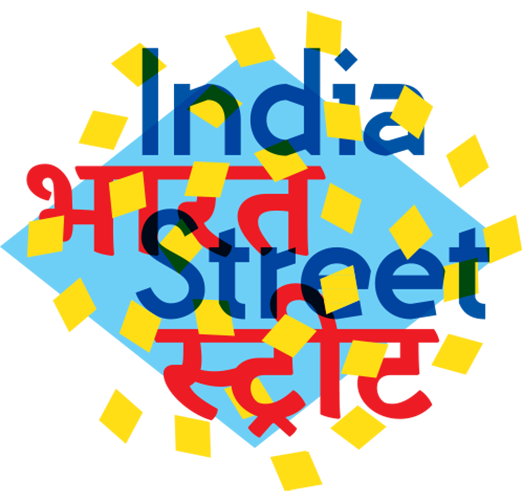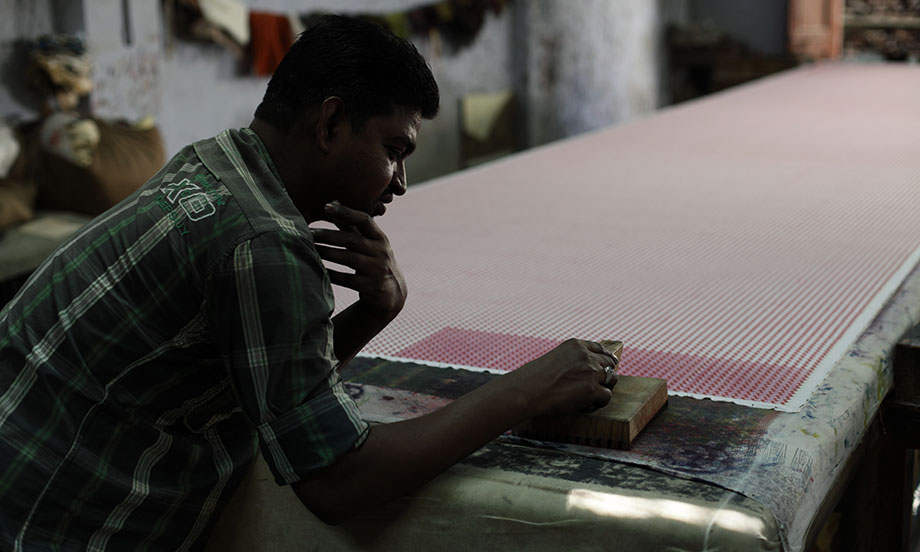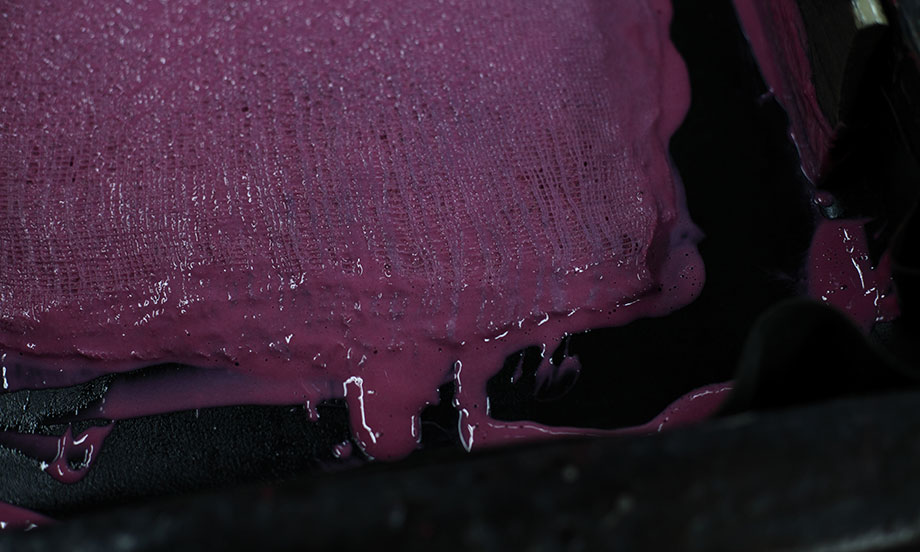Block Print
Elinor Gallant
Whilst the earliest examples of Indian printed cloth are those found in excavations of Old Cairo in the nineteenth century, it is thought that block printing may have existed more than 4,000 years ago in what is now Pakistan. The most important centres for block printing are in Rajasthan and Gujarat.
Blocks may be wooden or brass, and will generally correspond in number to the number of colours within the desired pattern. Wooden blocks are normally carved from Indian rosewood (shisham) – the carver traces a design onto the smooth, knot-free surface, and uses traditional hand tools to carve the block. A brass block is made from strips of brass tapped into a block, giving a metal edge that creates a crisp and detailed outline. Old blocks are kept and may be used many years later.
There are three types of block, used to create a pattern: Background (gudh), Outline (rekh) and Filler (datta). Intricate patterns may call for several outline and filler blocks. To achieve quality and durability a time-consuming process of pre-treatment of the cotton to be printed is necessary. Printing tables are padded with layers of hessian cloth before the material to be printed is laid out on top.
The dye is placed in a tray with absorbent cloth to create a pad to cover the block evenly with the dye before applying it to the cloth. As each layer of design in printed, masks made of newspaper may be placed to protect some parts of the design. In some cases a resist layer may be printed before the full cloth is then dipped in a final colour, or a top layer of pattern in gold or silver paste may be applied – traditionally this would have been applied by painting or printing a gum paste then applying gold or silver leaf. Today paste is applied with a brass tube with a stencil base and plunger, then metallic powder is dusted over using a muslin pouch, leaving a coat of shiny embellishment.




